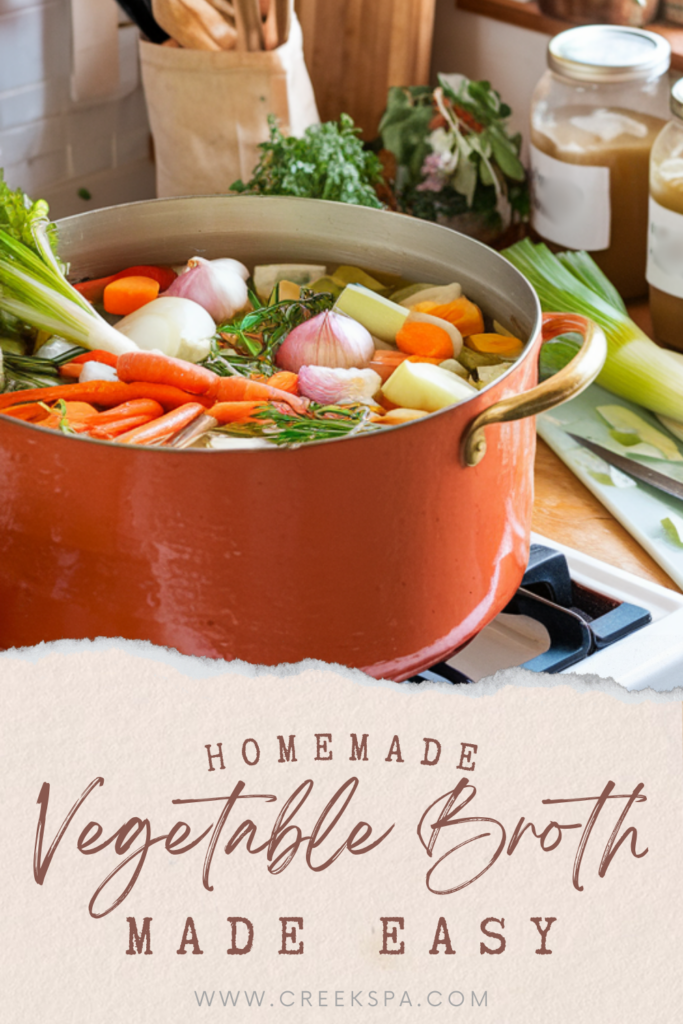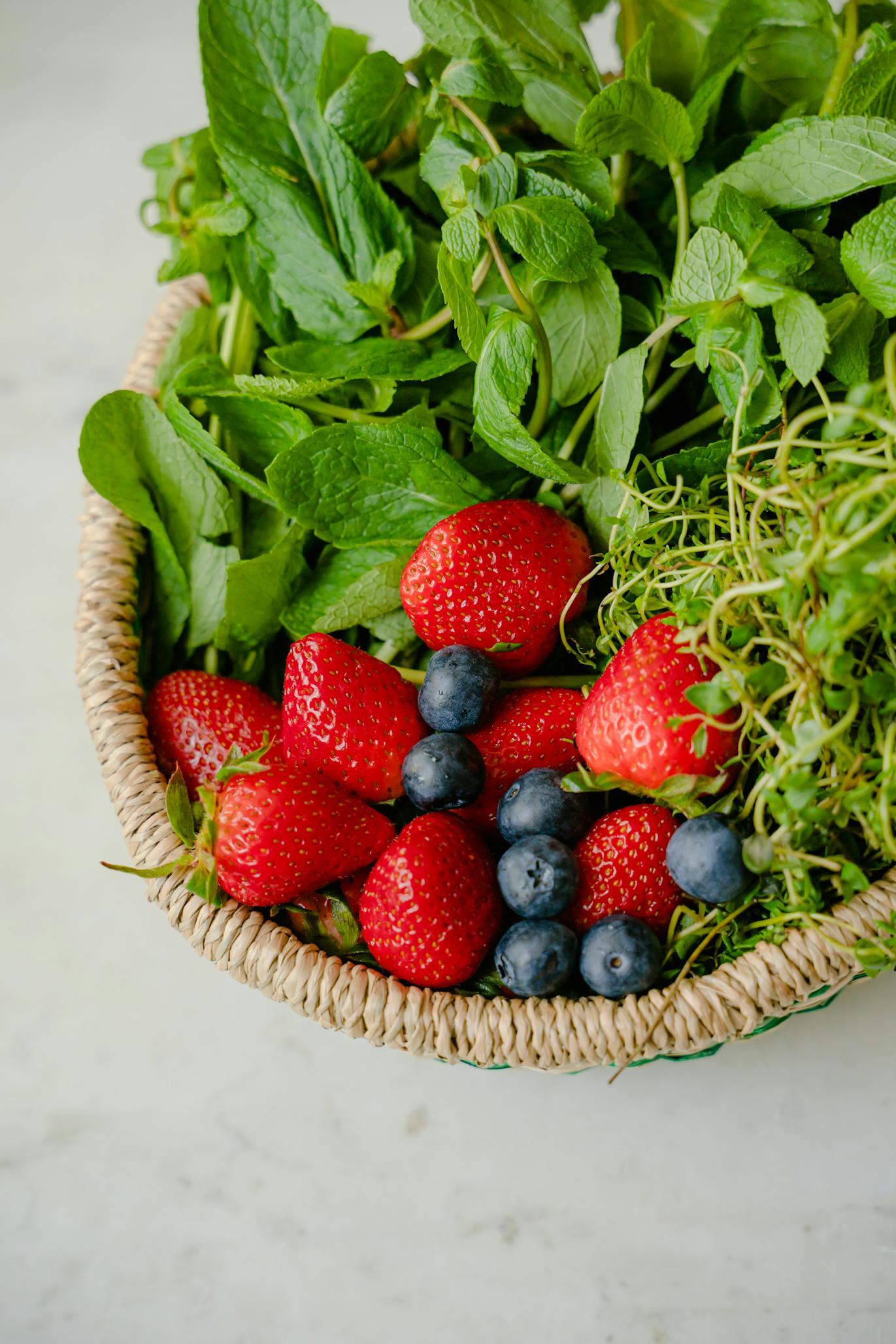Homemade Vegetable Broth Made Easy

If you’re an avid juicer like me, you’ve probably noticed how much pulp is left behind after extracting that delicious, nutrient-packed juice. Or have you noticed how many vegetable scraps you have after peeling your carrots or dicing your onions? Instead of tossing it, why not turn it into something amazing? Making your own vegetable soup stock is a simple, sustainable way to reduce food waste while infusing your meals with rich, homemade flavor. Let me show you how!
Step 1: Save Your Vegetable Scraps

The key to this simple method is to save and use all the vegetable scraps from your regularly scheduled cooking. Start by keeping a large ziplock bag in your freezer. Every time you cook, toss in the ends, peels, and scraps of vegetables that you’d normally throw away. Once the bag is full, you’re ready to make your broth. Sounds pretty easy, right? That’s because it really doesn’t have to be complicated. But read on to learn a few more tips and tricks for success.
Step 2: Choose Your Cooking Method

You can prepare your stock in one of two ways:
- Stovetop Method
Simmer the vegetable scraps in a large pot of water over medium heat for about an hour to hour and a half. Watch to make sure the liquid doesn’t boil out. - Crockpot Method
Place the scraps in a slow cooker, cover them with water, and let them simmer on low for several hours or overnight.
Step 3: Add Liquid for Flavor
Pour enough water to cover your vegetables in whatever type of pot you choose. For every 4 ½ quarts of water, I like to add 1 cup of white grape juice or ginger ale as a substitute for white wine. This enhances the flavor of the broth without making it overly sweet.
Optional: Roast or Sauté the Vegetables
To intensify the flavors, you can roast the vegetable scraps in the oven or sauté them over high heat ahead of time before simmering. This caramelizes the natural sugars in the vegetables and adds a rich, deep taste to your broth.
Optional: Salt To Taste
Salt tends to bring out the flavors in dishes. Each broth you make might taste a little different each time due to whatever vegetable combinations you use. You may find that you like the broth just as it is, or you might like it a little saltier, so add as much or as little as you like.
Vegetables That Work Well in Broth

Here’s a list of great vegetables to use:
- Root Vegetables: Parsnips, carrots, turnips (in small amounts)
- Leafy Greens: Kale, Swiss chard, spinach, bok choy, watercress, lettuce (but not endive or radicchio)
- Aromatic Veggies: Celery, onions (with or without skin), garlic (with or without skin), leeks, shallots, fennel
- Other Options: Zucchini, corn cobs (whole or stripped), mushrooms, tomatoes, eggplant, cucumbers, celeriac, green beans, fresh herb stems
Note: Remove the skins from vegetables that might be waxed, such as eggplant, cucumbers, and turnips.
Vegetables to Use Sparingly or Avoid
- Starchy Vegetables: Winter squash (butternut, acorn, delicata), potatoes, and corn can make the broth cloudy. Avoid these if you’re making clear soups like minestrones or consommés.
- Strongly Flavored Vegetables: Broccoli, cauliflower, and peppers can overpower the flavor of your broth. Save these for other dishes.
Step 4: Store Your Broth

Once your stock is done, strain out the vegetable scraps and let the liquid cool. Make large batches and freeze them in smaller portions for convenience:
- Freeze in 2- or 4-cup portions for recipes.
- Use ice cube trays to freeze small amounts perfect for sautéing onions or adding a splash of flavor to dishes.
I have a variety of these Souper Cubes, in different sizes, that I like to freeze things in. Once they are frozen you can pop them out of the trays and store them in freezer bags so that the trays are ready for next time you have something you want to freeze.
We earn a commission if you make a purchase, at no additional cost to you.
Optional: Canning The Broth
Or if you are feeling super ambitious, or don’t have as much room in your freezer to store vegetable broth, you could always can the vegetable broth so that it can be stored on a shelf instead.
How to Use Your Homemade Vegetable Broth

- As a base for soups and stews
- To flavor mashed potatoes or grains
- To cook your rice in instead of water
- Instead of oil for sautéing onions or other vegetables
I hope this helps you see just how easy making your own vegetable stock can be. It’s a sustainable and flavorful way to elevate your cooking while reducing food waste. Start saving those scraps, and you’ll never run out of delicious broth again!
To your health and happiness!







